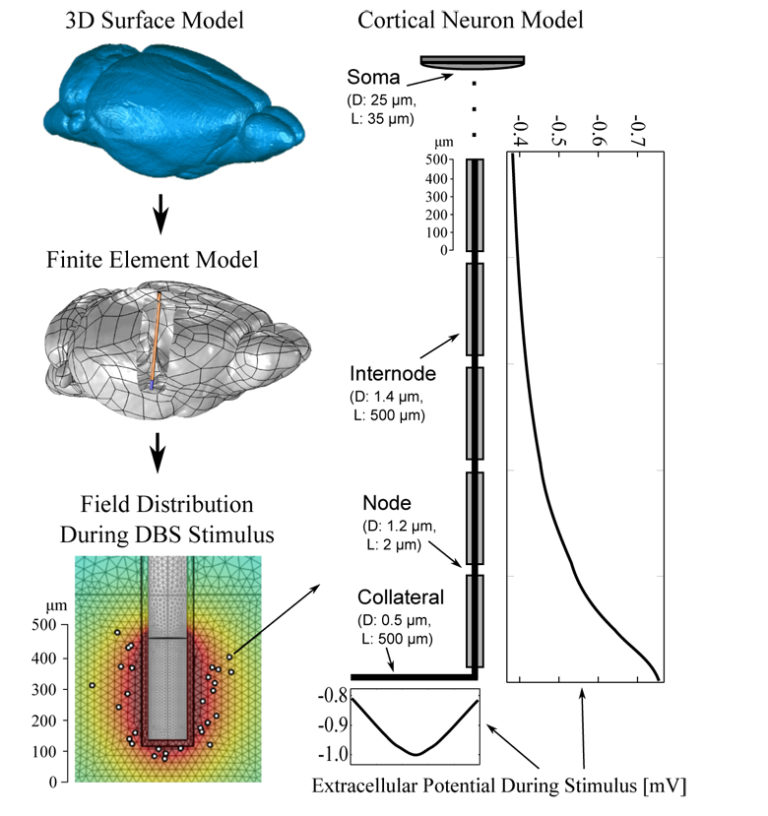
Models of the cortico-basal ganglia network and volume conductor models of the brain can provide insight into the mechanisms of action of deep brain stimulation (DBS). In this study, the coupling of a network model, under parkinsonian conditions, to the extracellular field distribution obtained from a three dimensional finite element model of a rodent’s brain during DBS is presented. This coupled model is used to investigate the influence of uncertainty in the electrical properties of brain tissue and encapsulation tissue, formed around the electrode after implantation, on the suppression of oscillatory neural activity during DBS. The resulting uncertainty in this effect of DBS on the network activity is quantified using a computationally efficient and non-intrusive stochastic approach based on the generalized Polynomial Chaos. The results suggest that variations in the electrical properties of brain tissue may have a substantial influence on the level of suppression of oscillatory activity during DBS. Applying a global sensitivity analysis on the suppression of the simulated oscillatory activity showed that the influence of uncertainty in the electrical properties of the encapsulation tissue had only a minor influence, in agreement with previous experimental and computational studies investigating the mechanisms of current-controlled DBS in the literature.

